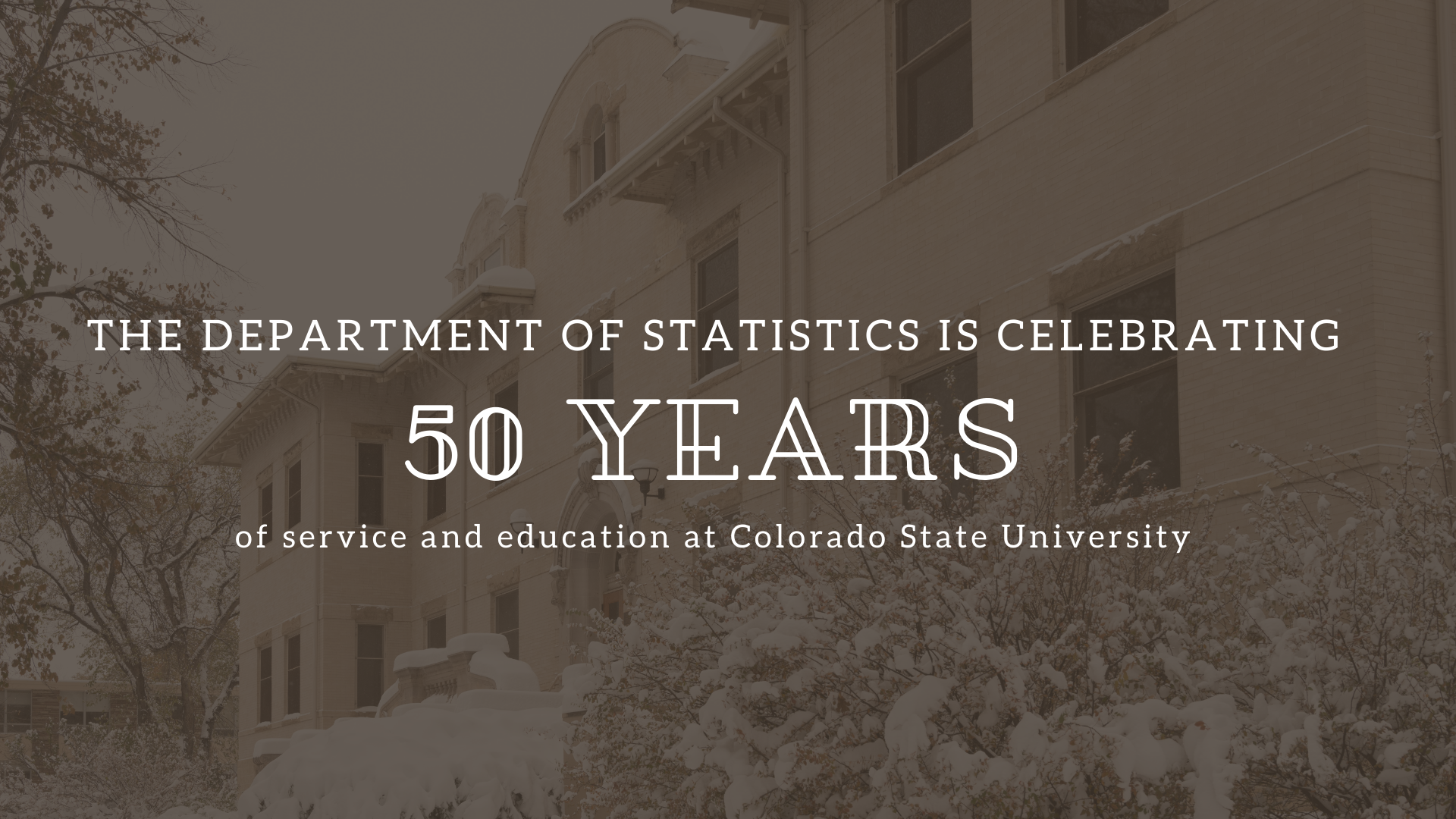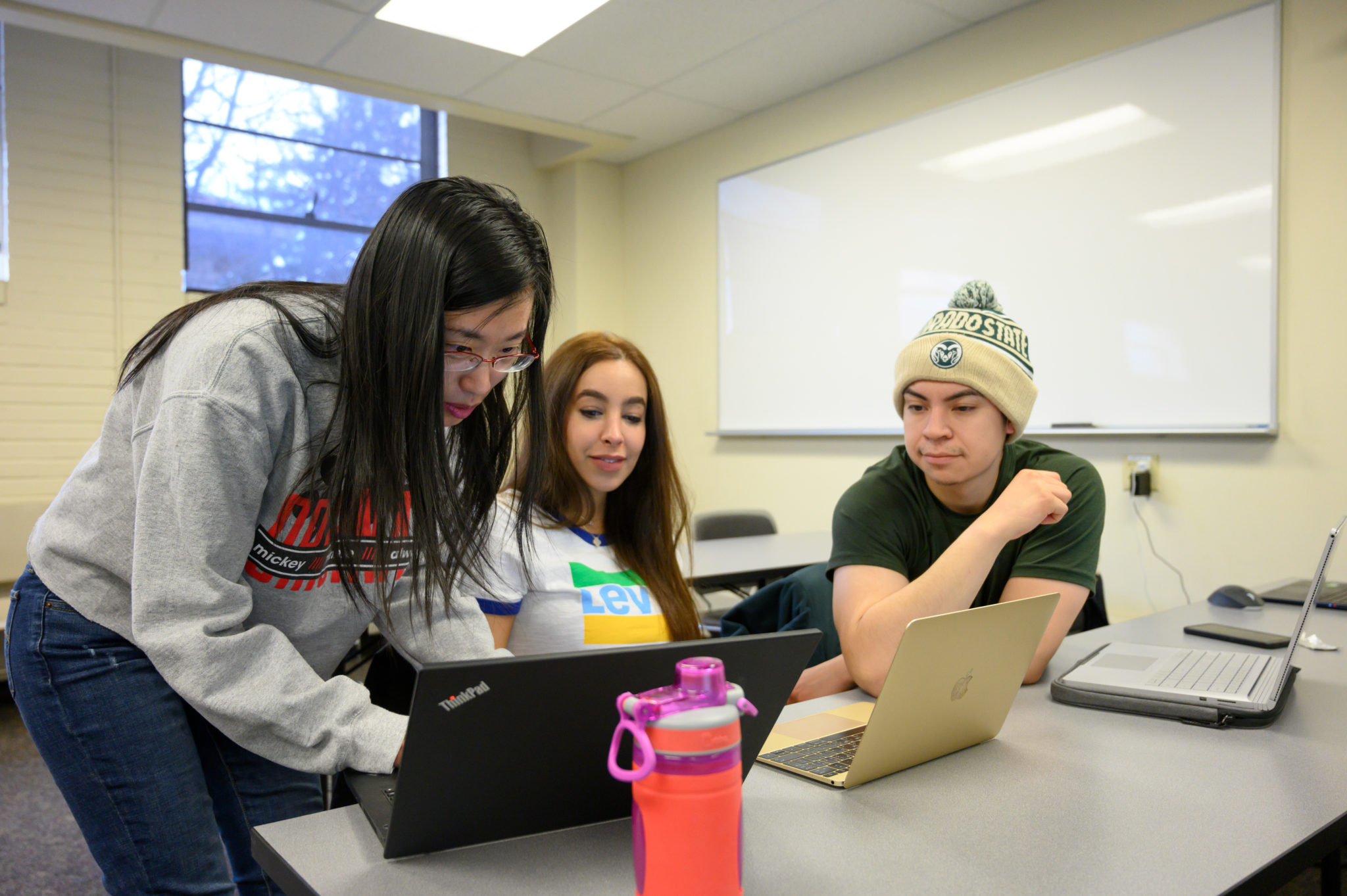
This year the Colorado State University Department of Statistics is celebrating its 50th anniversary. It is also the 60th anniversary of its Ph.D. program and the Franklin A. Graybill Statistics and Data Science Laboratory (Stat Lab) – marking six decades of world-class education, research, service, and interdisciplinary support of the CSU community through powerful application of foundational science.
A brief history
1879 – When Colorado Agricultural College opened for classes, there were no trained mathematicians on faculty. Mathematics, however, still informed much of the foundational studies at the college. For many years, engineers, military officers and physicists taught mathematics.
1925 – Andrew Clark was the first member of the Department of Mathematics to have received a bachelor’s and master’s of mathematics, both from the University of Colorado. Clark joined the department as a faculty member in 1923, and taught the first statistics course here in 1925. The course was designed as an aid for students in classes where there was a need for more advanced and scientific methods of handling data. Modern statistics was just beginning to emerge as a formal discipline, and CSU’s program developed alongside it.
1947 – Colorado A&M approved an undergraduate degree in mathematics. The next step was to develop graduate degree programs, which required more faculty, and more faculty with more advanced training.
In 1952 – Clark was appointed dean of faculty for the university, and Harris Guard succeeded him as head of the Department of Mathematics.
1960 – Frank Graybill was hired onto the mathematics faculty. In the following year, he founded the statistical laboratory that now bears his name and continues to serve the campus research community.
1965 – The first Ph.D.s in statistics at CSU were awarded.
1971 – The Department of Mathematics and Statistics split into two separate departments and Graybill became the head of the new Department of Statistics.
1980s – The Department of Statistics created a world-class research group in applied probability. Researchers of such caliber further helped establish the reputation of the department as a renowned center in probability and statistics.
2003 – The department was named a Program of Research and Scholarly Excellence by CSU. That same year, the Master of Applied Statistics degree was established, designed to provide applied statistics education that leads to well-paid industry and government jobs. The online program is now ranked fourth nationwide among similar statistics and data science programs.
2014 – The undergraduate statistics program was reestablished, followed a few years later by the introduction of the undergraduate major in data science. The program now has over 70 enrolled students.
Recognition and respect
“Many statisticians in our department have made significant contributions
to the discipline,” said Haonan Wang, chair of the department. “By gaining national and international recognition and respect, they helped establish the department as one of the best in the world.”
The Stat Lab is designated as a core research facility, providing expert statistical support to university research, education and outreach enterprises. The Stat Lab participates on both short- and long-term collaborative relationships with departments in every college at CSU.
With such a rich history, “we try to maintain and advance the overall mission of the department,” said Jay Breidt, former chair. “There’s education, there’s research and there’s outreach. All of those are important to our mission and legacy, and we take that seriously.”
Looking forward
Building on its long history, the Department of Statistics is now looking to the future.
The department now serves 4,000 CSU undergraduates in introductory statistics courses and 700 graduate students in advanced statistics courses every year.
The new Statistics Success Center provides tutoring to undergraduate students taking these introductory courses.

As new technologies emerge, data gathering, data storage and statistical analysis have innovated and evolved.
“Nowadays, data are everywhere and are penetrating our society, economy, advanced technologies, and national security and defense,” said Wang. “Whenever there are data, there will be statistics … Therein lies the power of statistics as a foundational science. Our students learn about the general principles and best practices of statistics that allow them to adapt to the evolving needs of private enterprise, government agencies, and research centers.”

Statistics is always adapting and evolving because there are always new sources and types of data from new technologies, and “we like that!” said Breidt. “We see that evolution reflected in the makeup of our faculty. As we hire new faculty, there are people who specialize in different things, whether the data are functions, tensors, networks, or something brand new.”
As the department adapts to the ever-changing technological landscape and prepares its students for competitive careers as statisticians, it is important to remember the department’s roots. Frank Graybill and Andrew Clark’s legacies, among many others, live on in the current faculty and staff; they can’t wait to see what the next 50 years will bring.
“[We] feel honored to be part of such a long and celebrated legacy,” said Wang. “It is a strong motivation to excel in research and instruction. We feel that it is our obligation and responsibility to inherit and carry forward the legacy and tradition of excellence in everything we do.”